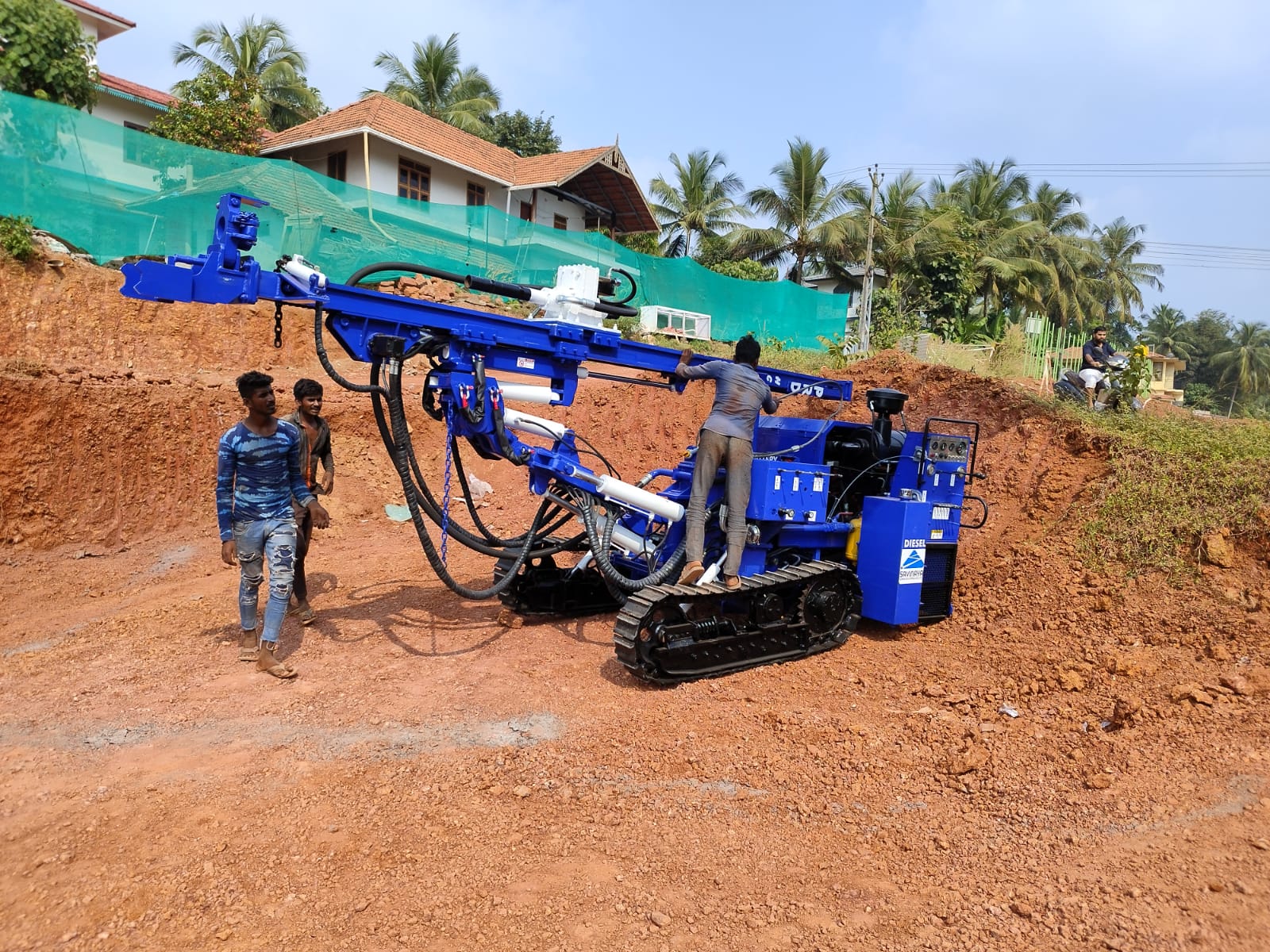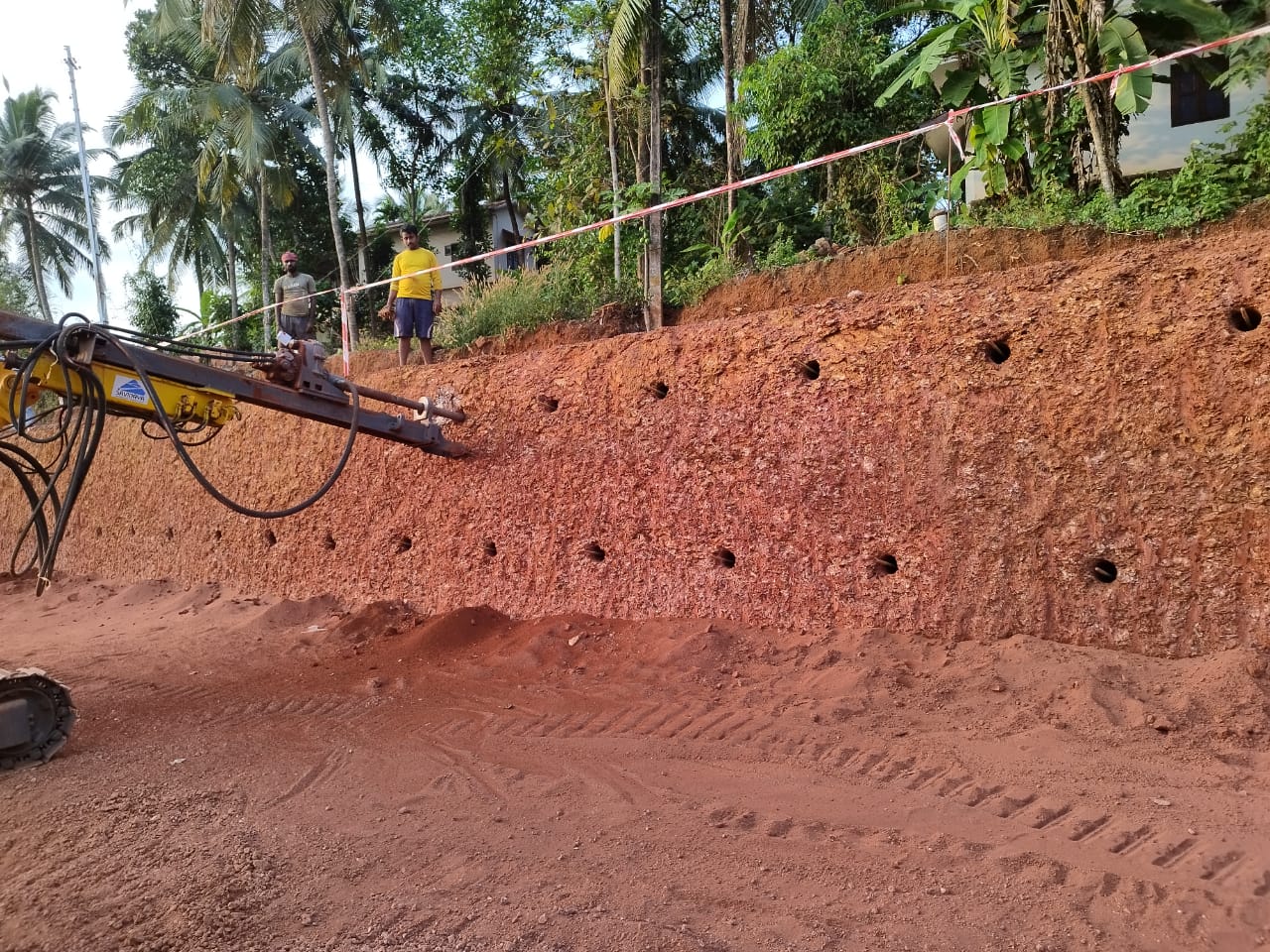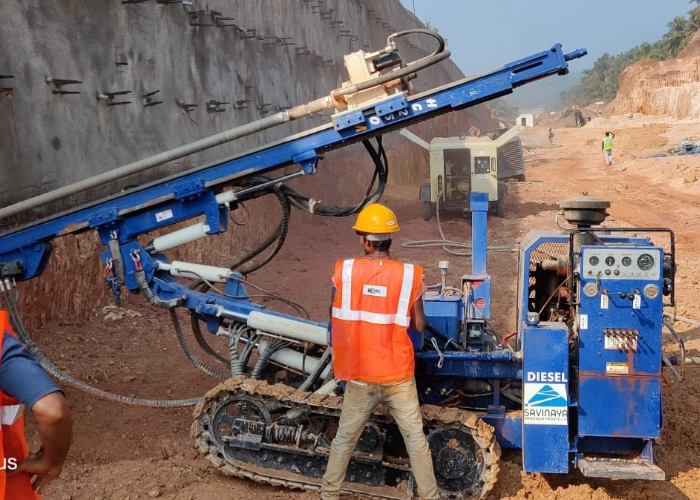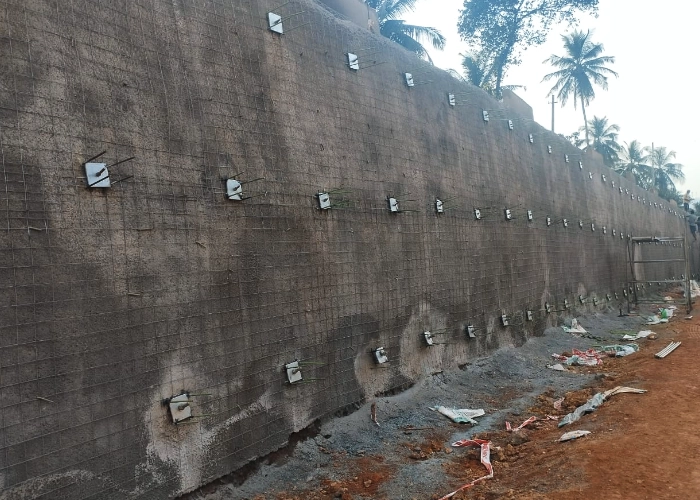
SOIL NAILING


Soil Nailing is a reliable method utilized to strengthen and enhance the stability of the soil. It is commonly used to stabilize slopes and landslides, support excavations as well as repair existing retaining walls.
At Savinaya, we offer optimum, technically sound, and safe geotechnical solutions for deep excavations, and slope stabilization as well as resolve retaining structure issues. We continuously innovate our tested and certified solutions. While we are a young and budding company, our management team possesses over 25 years of rich experience.
During this short stint in the Indian Infra industry, we have been instrumental in reducing the consumption of natural resources, reducing installation costs, improving worker safety as well as offering long-term durability using our soil reinforcement systems.
Soil Nailing Process
Soil nail walls are constructed from top to bottom. The soil is first excavated in 3-6 feet deep stages. At each stage, horizontal holes are drilled and tension-resisting steel bars are inserted into holes and grouted. Additionally, a drainage system is installed on the exposed face and reinforced shotcrete is applied. Next, Bearing plates are fitted to the heads of the soil nails and the installation process is continued until the design wall depth is reached.
Types of Soil Nailing Techniques:
Drilled and Grouted Soil Nailing Method
Self-Drilling Soil Nailing Method
Driven Soil Nailing Method
Jet Grouted Soil Nailing Method
Launched Soil Nail Method
Application of Soil Nailing
- Soil nailing is widely used in civil engineering projects such as highway construction, slope stabilization, and deep excavation support.
- The technique offers a cost-effective and efficient solution for improving soil stability, preventing landslides, and ensuring the safety of structures and people.

Why Should You Get Soil Nailing Done?
Savinaya is a reputed and reliable partner in Infra Space. We have been installing and developing soil-nailing techniques using specialized equipment. We have an experienced and dedicated team who work diligently to provide you with quality results. Our strict quality control measures ensure uniform and consistent results.
- Easy and quick to install
- Requires fewer materials and shoring
- Minimal environmental impact
- Reduces impact on surrounding properties
- Less noisy and creates fewer traffic obstructions
- Suitable for new constructions, temporary structures or remodeling processes
- Helps in-situ strengthening on existing slope surfaces with little excavation and backfilling
- Suitable for strengthening natural slopes or manmade cut slopes
- Suitable for confined spaces with limited access
FAQ's
Soil nailing is a slope stabilization technique used in geotechnical engineering where reinforcement elements, typically steel bars or anchors, are installed into the soil to improve its stability and prevent slope failure. These reinforcement elements are usually installed at an angle, known as the “nail angle,” and are grouted into the soil to provide additional shear strength.
Soil nailing works by reinforcing the soil and increasing its shear strength. Steel bars or anchors are typically drilled or driven into the soil at a predetermined angle, and then grouted to provide additional stability. The reinforcing elements act as tension members, resisting the tensile forces generated by the soil and preventing slope movement.
Soil nailing is commonly used in a variety of geotechnical applications, such as slope stabilization, retaining walls, embankments, and excavations. It is often used in situations where traditional earthwork methods may not be feasible or cost-effective, or where there are space constraints.
Some of the advantages of soil nailing include:
- Cost-effective compared to other slope stabilization methods.
- Can be used in tight spaces where other methods may not be practical.
- Provides immediate support and stabilization to slopes.
- Can be designed to accommodate a wide range of soil types and slope angles.
- Offers flexibility in design and can be customized to suit project requirements.
Some of the limitations of soil nailing include:
- Soil nailing may not be suitable for very soft or highly cohesive soils.
- Requires specialized equipment and skilled labor for installation.
- Quality control during installation is critical to ensure the effectiveness of the system.
- Soil nailing may not be suitable for very steep slopes or in high water table conditions.
- Monitoring and maintenance may be required to ensure long-term stability.
